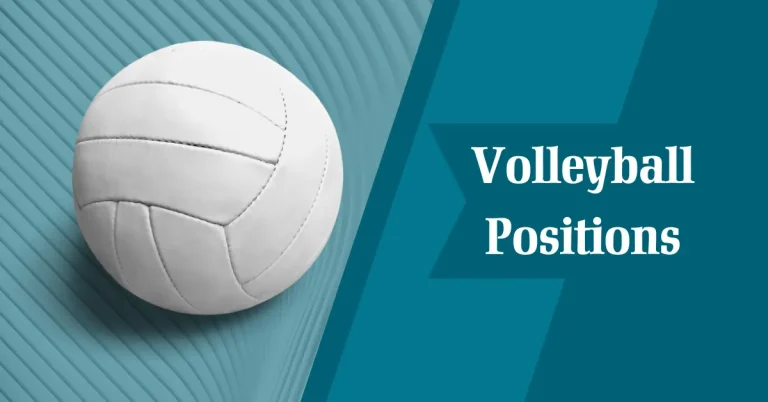Unlocking the Secrets of the Outside Hitter: Rules, Positions, Tips & Tricks, and Role-Explained
The left-side player in volleyball is known as an outside hitter whose main role is to play an offensive role during the game and be responsible for spiking the ball over the net to score points. While they play an offensive role, they should master defensive gameplay for the team’s overall victory.

What is an Outside Hitter In Volleyball?
In volleyball, an outside hitter, also known as a left-side hitter, has to attack or hit the ball from the left side of the court and cover the left-side area of the offensive zone. These players are especially the spikers in teammates and receive the most balls after the sets. If the pass is off the net and other options aren’t available, the outside hitter showcases their unique hitting skills.
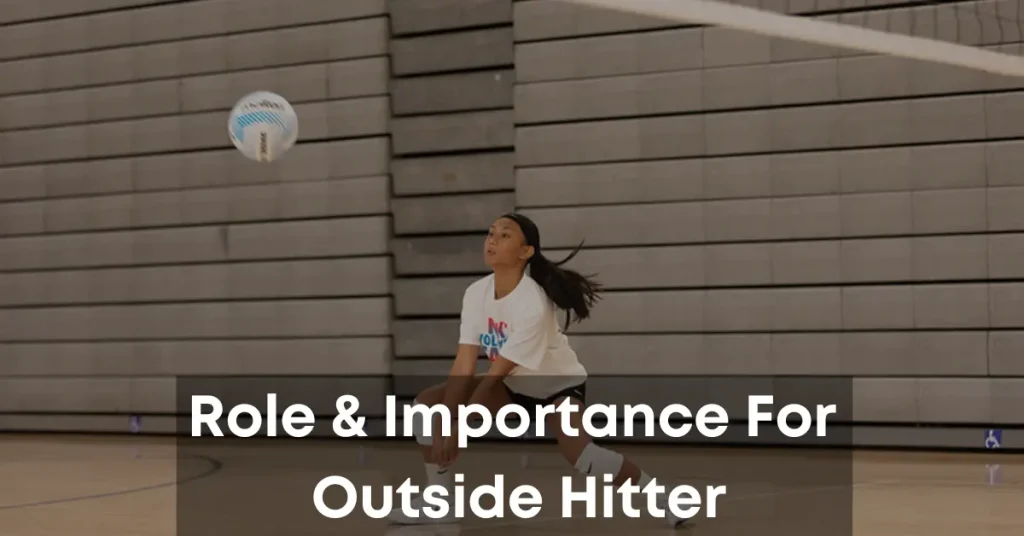
Role And Importance:
All the players in a volleyball team have their roles and importance, but the role and importance of opposite hitters and outside hitters are the same. The key responsibilities of an outside hitter are:Attacking:
One vital role of outside hitters is to be good offensive players for the team. They are responsible for attacking the ball and scoring points for the team. Outside hitters perform well-timed fitness spikes to overcome opponents’ defenses.
Blocking:
The opposite hitter’s second role after attacking is to defend their side area, which is why they play a unique role in the team’s blocking strategy. Their main goal is to stop opponents’ attacks at the net.
Passing:
Passing is another role of outside hitters, but it is not mandatory, and they are often involved in serve-receive formations. For overall team offense gameplay, their exceptional passing skills are required, along with accurate footwork, agility, and the ability to anticipate the other team players.
Versatility:
Outside hitters are versatile, and they are capable of adapting to various game scenarios, such as transitioning quickly from defense to offense or adjusting their hitting technique based on the set they receive.
Leadership:
Outside hitter also plays the role of leadership by communicating effectively with other teammates, and they provide suggestions during critical gameplay by making quick decisions.
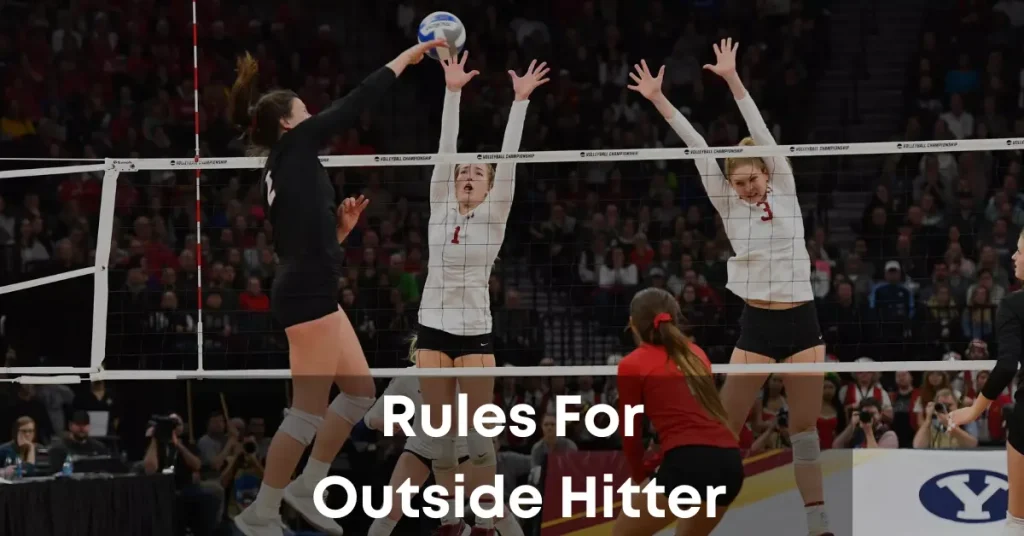
Rules And Regulation:
The rules and regulations for all volleyball players are the same except for the libero. However, the general rules and regulations for outside hitters are given below:Rotational Order:
The rotational order is the same for every player, and they follow a clockwise direction before receiving a serve and after winning a point. Outside hitters must know their rotational order, and when it’s their turn, they should rotate in the correct position.
Serving:
The outside hitter, like all players, must follow the serving rules. These include serving from behind the end line, not stepping on or over the edding line during the line, and following the rotational order of service.
Attacking:
Outside players have specific rules when hitting the ball. For example, they must jump from behind the attack line (also known as the 3-meter line) when attacking from the back row. They must avoid the back-row attack violation if they attack the ball above the net while in front of the attacking line.
Blocking:
Outside hitters also participate in blocking, and they should know the rules of blocking, which include jumping to block without contacting the net and reaching over the net to block only after the attacker contacts the ball.
Defense:
The outside hitter should know how to play a role in defense, including digging and receiving. All these actions must be done in accordance with the rules, including not contacting the ball illegally or interfering with opposing plays that break the respect and professionalism of the game.
Substitution:
After the rotation, when an outside hitter comes to the back row, they have the opportunity to substitute with the libero, but they can also substitute from the front row. Keep in mind that except for the libero, all other players have limited substitutions they can make, whether from the front row or back row, and a team can substitute 12 times. These substitutions determine when an outfielder may be substituted into the game during the dead ball.
Behavior:
The rules regarding sportsmanship, behavior, and respect for officials apply to all players, including outside hitters. The behavior rules include staying away from arguments with officials or opposing team players and using vulgar language to behave unsportsmanlike.
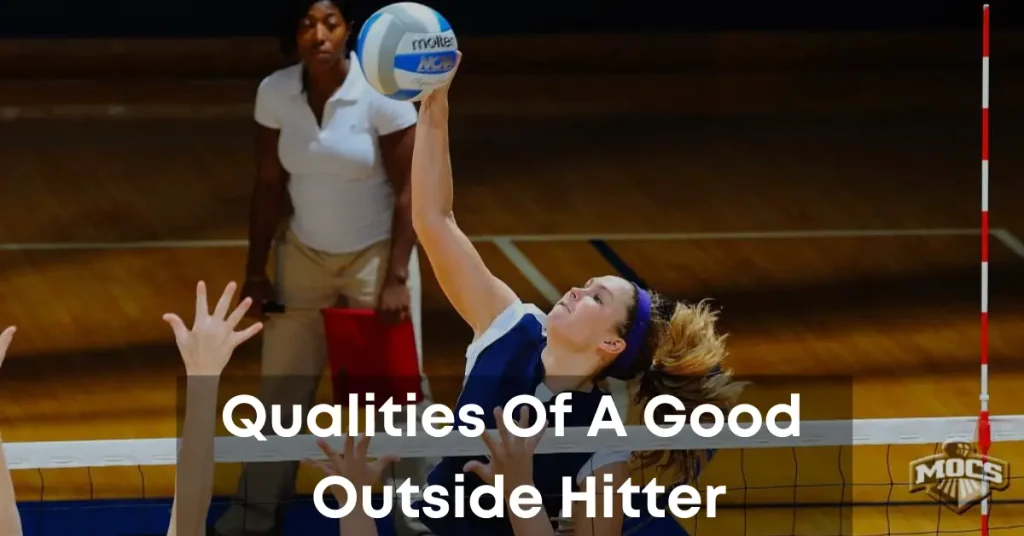
Qualities in Good Outside Hitter:
Outside hitters showcase different qualities that combine technical skills, mental toughness, and strong teamwork. And the combination of all these skills plays a role in the winning of the team. The qualities of a good outside hitter are given below:
Powerful Hitting:
The first and main quality of an outside hitter is powerful hitting because this is what challenges the opponent’s defense. Powerful hitting produces good straight and strong jumping ability.
Accuracy:
Strong power and jumping ability are essential, and accuracy is equally crucial because a good outside hitter represents himself by presenting strategically arranged attacks that aim to land the ball in the gaps of the opponent’s defense or target a specific area where the opponent’s player is not available.
Versatility:
Versatility should be found in every player in volleyball and the same as found in outside hitters. They should be capable of reading for offensive and defensive gameplay. They should know what time they have to block, attack, or defend, which makes a strong impact on the overall performance of the team.
Agility & Speed:
A good outside hitter is always quick and agile, and those skills help them move around the court effectively. They also have good lateral movement, which allows them to do unique passing and play quickly and efficiently.
Jumping Ability:
As we all know, volleyball is a jumping game, and every player demands good jumping ability. For outside hitters, a good and strong vertical jump is needed, which helps them reach high and spike the ball from the most challenging point.
Court Awareness:
Along with the outside hitter, court awareness is significant for every player, which facilitates them knowing about the opponents’ moves and making quick decisions accordingly. The outside hitter should possess a thorough understanding of the course to analyze the situation and adjust their gameplay.
Communication:
An Outside Hitter often plays a leadership role, so they communicate with their teammates. That’s why good communication and understanding with the team are other qualities of an outside hitter.
Mental Toughness:
Volleyball is a sport of mentality and demands a good and strong mind. A good outside hitter also possesses mental skills and is always focused on the game, especially during the critical movement of the game.
Adaptability:
An outside hitter is highly adaptable and always strives to adapt and improve his/her skills. A good outside hitter always adapts to the opponents’ team strategies and adjusts their gameplay accordingly.
How do you become a good volleyball outside hitter?
In order to become a good outside hitter, you need to master a few skills along with dedication and good practice. To become a good outside hitter, you must possess the following characteristics: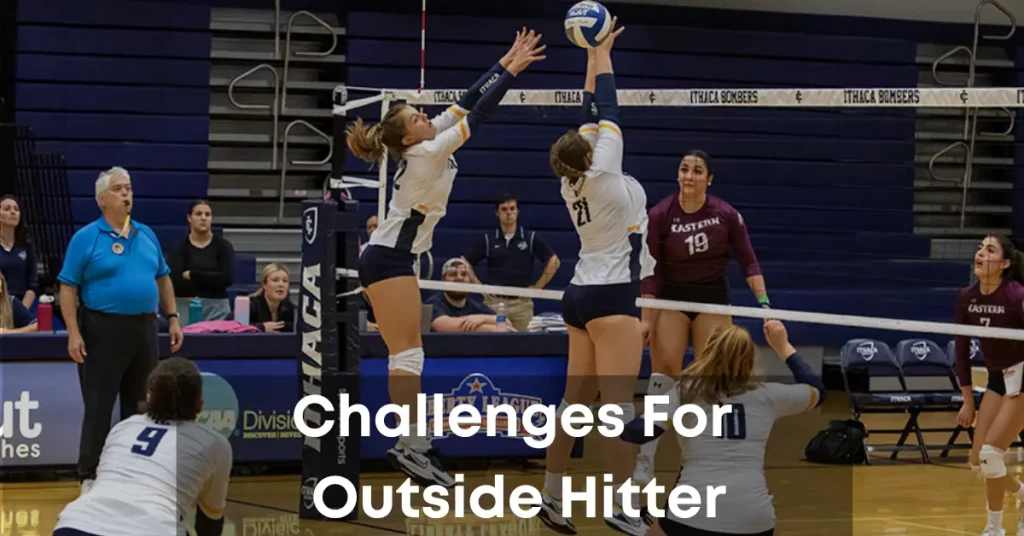
Challenges For Outside Hitter:
Outside hitters face several challenges that require specific skills and strategies to overcome. Here are some common challenges they encounter:Equipment For Outside Hitter:
Difference Between Outside Hitter And Opposite Hitter:
Outside Hitter:
Opposite Hitter (Right Side Hitter):
FAQs:
Conclusion:
In volleyball, the outside hitter holds a pivotal role, serving as the primary attacker from the left side of the court and contributing significantly to both the offensive and defensive aspects of the game. Distinguished by their powerful spikes, strong defensive skills, and adaptability, outside hitters must possess a blend of athleticism, technique, and mental endurance to excel in this position. While sharing similarities with the opposite hitter, the outside hitter’s unique responsibilities and skill set make them indispensable assets in any successful volleyball team.


